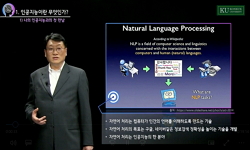Functional connectivity (FC) patterns obtained from resting-state functional magnetic resonance imaging data are commonly employed to study neuropsychiatric conditions by using pattern classifiers such as the support vector machine (SVM). Meanwhile, a...
http://chineseinput.net/에서 pinyin(병음)방식으로 중국어를 변환할 수 있습니다.
변환된 중국어를 복사하여 사용하시면 됩니다.
- 中文 을 입력하시려면 zhongwen을 입력하시고 space를누르시면됩니다.
- 北京 을 입력하시려면 beijing을 입력하시고 space를 누르시면 됩니다.


Deep neural network with weight sparsity control and pre-training extracts hierarchical features and enhances classification performance: Evidence from whole-brain resting-state functional connectivity patterns of schizophrenia
한글로보기https://www.riss.kr/link?id=A107656215
- 저자
- 발행기관
- 학술지명
- 권호사항
-
발행연도
2016
-
작성언어
-
- 주제어
-
등재정보
SCOPUS,SCIE
-
자료형태
학술저널
-
수록면
127-146(20쪽)
- 제공처
-
0
상세조회 -
0
다운로드
부가정보
다국어 초록 (Multilingual Abstract)
Functional connectivity (FC) patterns obtained from resting-state functional magnetic resonance imaging data are commonly employed to study neuropsychiatric conditions by using pattern classifiers such as the support vector machine (SVM). Meanwhile, a deep neural network (DNN) with multiple hidden layers has shown its ability to systematically extract lower-to-higher level information of image and speech data from lower-to-higher hidden layers, markedly enhancing classification accuracy. The objective of this study was to adopt the DNN for whole-brain resting-state FC pattern classification of schizophrenia (SZ) patients vs. healthy controls (HCs) and identification of aberrant FC patterns associated with SZ. We hypothesized that the lower-to-higher level features learned via the DNN would significantly enhance the classification accuracy, and proposed an adaptive learning algorithm to explicitly control the weight sparsity in each hidden layer via L<SUB>1</SUB>-norm regularization. Furthermore, the weights were initialized via stacked autoencoder based pre-training to further improve the classification performance. Classification accuracy was systematically evaluated as a function of (1) the number of hidden layers/nodes, (2) the use of L<SUB>1</SUB>-norm regularization, (3) the use of the pre-training, (4) the use of framewise displacement (FD) removal, and (5) the use of anatomical/functional parcellation. Using FC patterns from anatomically parcellated regions without FD removal, an error rate of 14.2% was achieved by employing three hidden layers and 50 hidden nodes with both L<SUB>1</SUB>-norm regularization and pre-training, which was substantially lower than the error rate from the SVM (22.3%). Moreover, the trained DNN weights (i.e., the learned features) were found to represent the hierarchical organization of aberrant FC patterns in SZ compared with HC. Specifically, pairs of nodes extracted from the lower hidden layer represented sparse FC patterns implicated in SZ, which was quantified by using kurtosis/modularity measures and features from the higher hidden layer showed holistic/global FC patterns differentiating SZ from HC. Our proposed schemes and reported findings attained by using the DNN classifier and whole-brain FC data suggest that such approaches show improved ability to learn hidden patterns in brain imaging data, which may be useful for developing diagnostic tools for SZ and other neuropsychiatric disorders and identifying associated aberrant FC patterns.




 ScienceON
ScienceON






